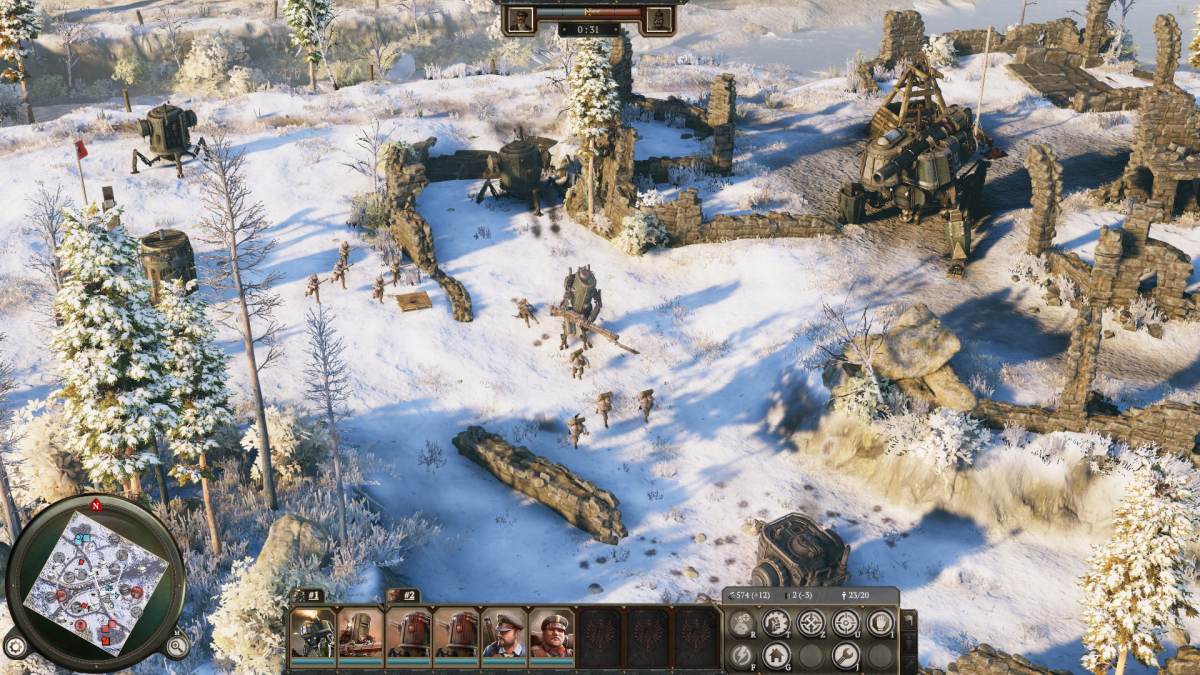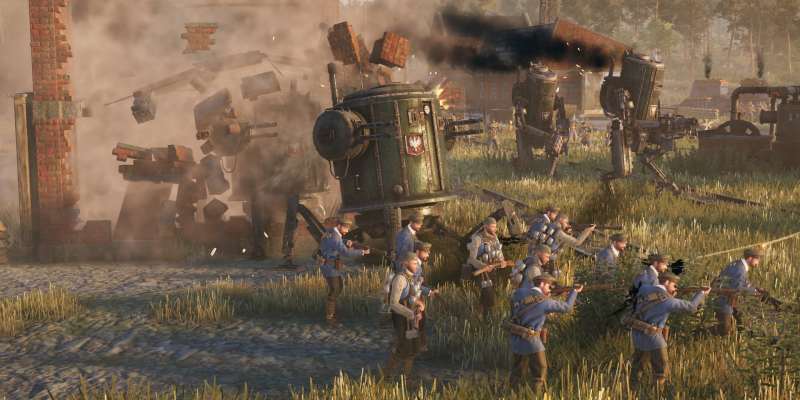Alternate history is a strange genre. It professes to be an opportunity to look back at the lives and decisions of those who came before us and ask, “What if…?” Often, however, they’re more concerned with asking, “Wouldn’t it be cool if…?” Iron Harvest is another alternate history game that falls distinctly into that latter camp. This time, the question is, “Wouldn’t it be cool if everyone in Europe had giant mechs during the 1920s?” And yes, it turns out it would be cool if everyone had mechs in the ’20s. Cool for us, the players, that is. It’s not so cool for this timeline’s inhabitants, whom these giant mechs are intent on mowing down.
The game takes place in the 1920+ universe of Polish artist Jakub Różalski, and it’s not the first game to do so. The board game Scythe, which received a digital release in 2018, also uses Różalski’s mech-filled post-war vision as its setting. It’s a compelling idea, if only for the sheer spectacle on display, and I don’t expect Iron Harvest to be the last game that takes place in the setting.
But while Scythe has a focus on rebuilding a continent decimated by war, the same can’t be said for the gameplay of Iron Harvest. There, in the grim dark of the 1920s, there is only war.

Iron Harvest has a familiar format for anyone who’s picked up the Dawn of War or Company of Heroes series of games: You create and control teams of combatants, sending them to capture resources and strategic points so you can build more, better units. There’s a low unit limit, heavy reliance on cover, and, of course, giant walking death machines that will tear through any infantry foolish enough to stand out in the open.
It’s an effective formula and one that keeps players from focusing entirely on base rush tactics. The maps are filled with choke points, effective defensive positions, and important locations, meaning that the entire map will always be at play and tactical thinking actually has a chance of overcoming a player who has mastered the clicks-per-second focus of traditional RTS.
German studio King Art Games seems to have implemented the formula effectively — with a few tweaks to help emphasize the difference between this style of game and the old classics of the RTS genre. For example, you can only have a total of nine teams on the field by default, making it all the more difficult to overwhelm your opponent with sheer numbers.
There are also weapons caches and abandoned artillery scattered across every map, letting basic units upgrade themselves into something more powerful and more specialized. It’s something that could help players who have fallen behind in the resource game remain relevant even as their opponents can afford to build better units outright.
This approach makes sense, given how the game’s Kickstarter campaign promised an RTS where strategy and tactics would be able to overcome clicks per second and superior numbers. But there was also another promise made, that of a strong, compelling single-player campaign. The demo only features skirmishes and multiplayer matches though, so it’s impossible to guess how well-constructed the story will end up being. Nonetheless, the Kickstarter campaign makes it sound like a major goal of Iron Harvest is to take Różalski’s artwork and flesh it out into a coherent story, rather than a bunch of cool-looking artistic concepts.
Regardless, Iron Harvest is so far a noble attempt to rescue RTS games from the rut that nearly killed the genre. Yes, it cribs off of Relic’s Dawn of War formula, but it still looks like a step in the right direction for how to fix things.
